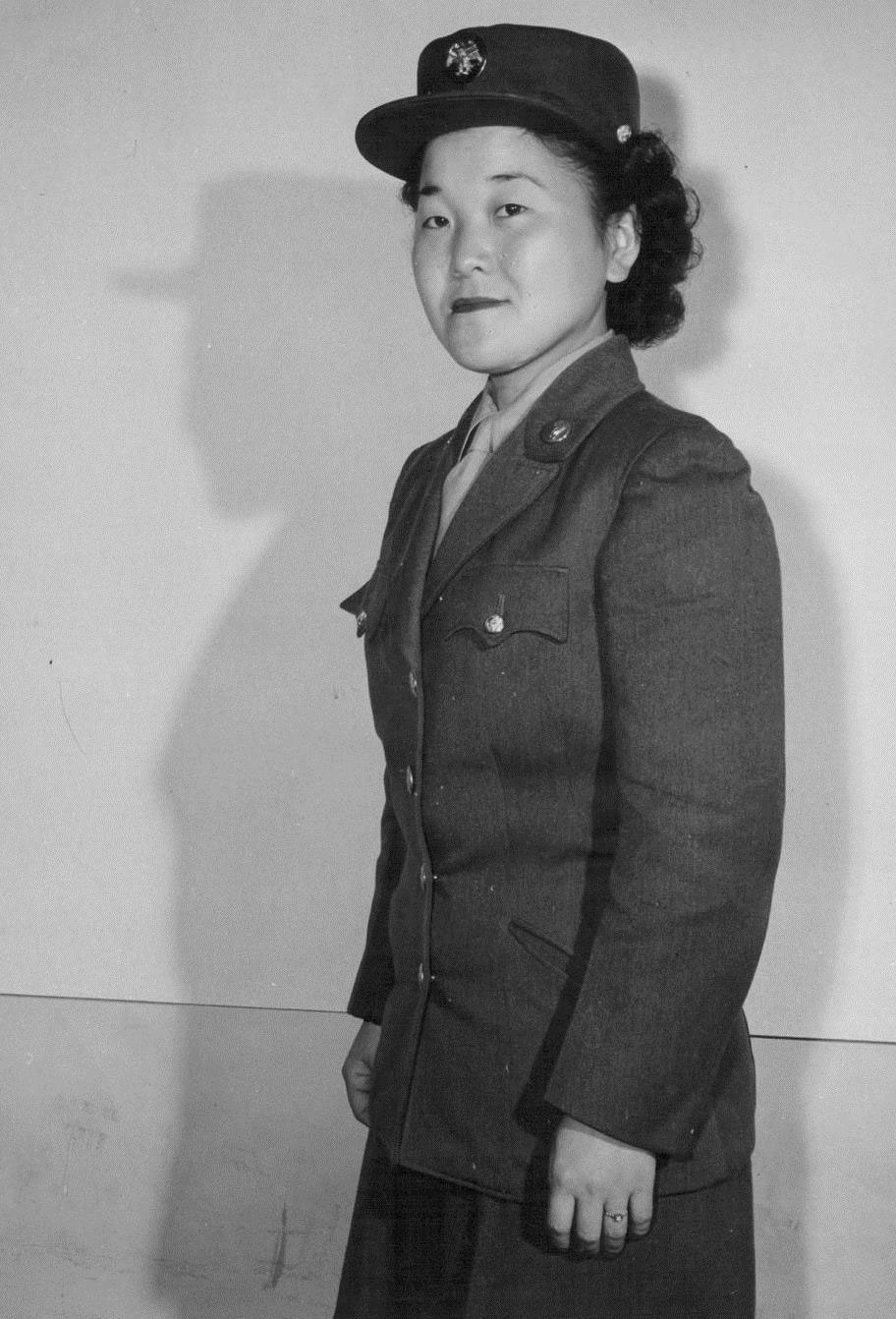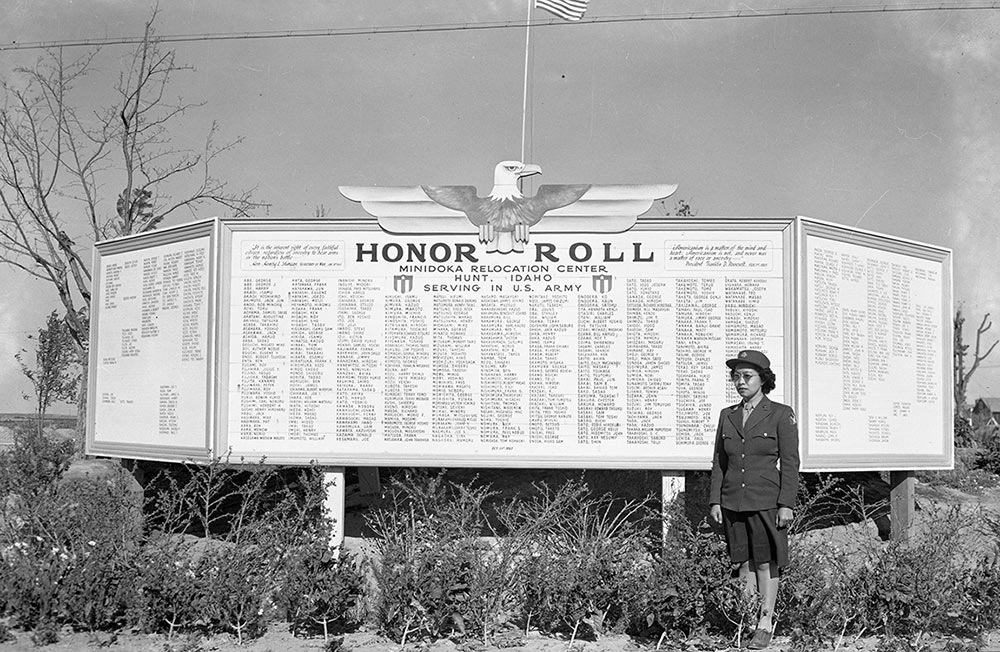The history of Japanese American military service during World War II is not a male-only story. By the time the war ended, nearly 500 Japanese American women had served the United States.
When America entered World War II, the country had to raise large armies on both the Atlantic and Pacific fronts. The result was a manpower shortage, which required the military to turn to women for needed support. Servicewomen became military clerks, typists, cooks, drivers, and unit cadre, freeing up men to go to frontline combat roles.
Japanese American women served in the Women’s Army Corps (WAC), Army Nurse Corps (ANC), and Cadet Nurse Corps (CNC). The ANC began accepting Japanese American women in February 1943, while the WAC began enlisting them in September of that same year. Japanese American women had previously been denied entry to its predecessor WAAC (Women’s Army Auxiliary Corps).

Private Shizuko Shinagawa, 21, of the Women’s Army Corps. May 1944. Courtesy of the War Relocation Authority.






